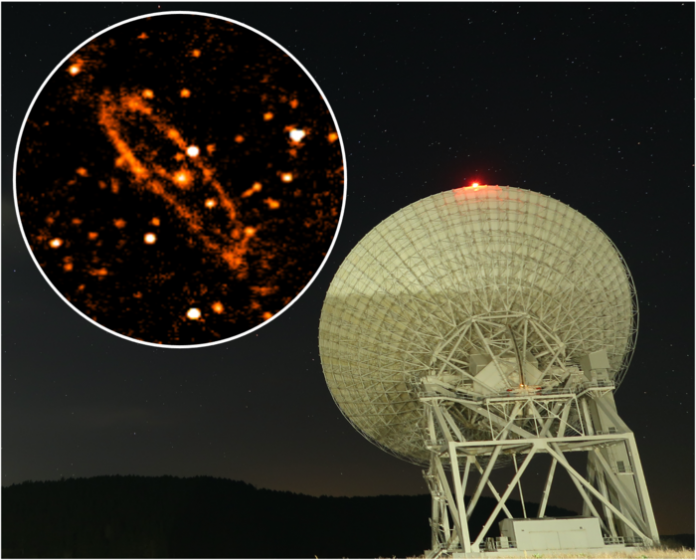This study, led by University of British Columbia physicist Sofia Fatigoni, is the first to capture such a clear image of the Andromeda galaxy
The study is the first to create a radio image of Andromeda at the microwave frequency of 6.6 GHz.
It was led by University of British Columbia physicist Sofia Fatigoni, with colleagues at Sapienza University of Rome and the Italian National Institute of Astrophysics. To observe Andromeda at this frequency, the researchers required a single-dish radio telescope with a large effective area.
‘As if we were looking at ourselves from the outside’
“This image will allow us to study the structure of Andromeda and its content in more detail than has ever been possible,” said Fatigoni, a PhD student in the department of physics and astronomy at UBC.
“Understanding the nature of physical processes that take place inside Andromeda allows us to understand what happens in our own galaxy more clearly – as if we were looking at ourselves from the outside.
“In particular, we were able to determine the fraction of emissions due to thermal processes related to the early stations of new star formation, and the fraction of radio signals attributable to non-thermal mechanisms due to cosmic rays that spiral in the magnetic field present in the interstellar medium.”
66 hours of observation later
For the study, the scientists turned to the Sardinia Radio Telescope, a 64-metre fully steerable telescope capable of operating at high radio frequencies.
It took 66 hours of observation with the Sardinia Radio Telescope and consistent data analysis for the researchers to map the galaxy with high sensitivity. They were then able to estimate the rate of star formation within Andromeda, and produce a detailed map that highlighted the disk of the galaxy as the region where new stars are born.
“By combining this new image with those previously acquired, we have made significant steps forward in clarifying the nature of Andromeda’s microwave emissions and allowing us to distinguish physical processes that occur in different regions of the galaxy,” said Dr. Elia Battistelli, a professor in the department of physics at Sapienza and coordinator of the study.











